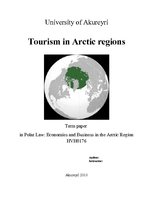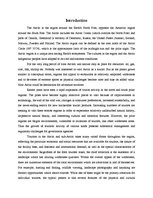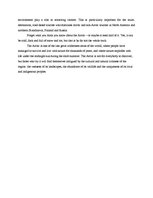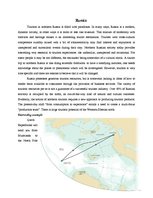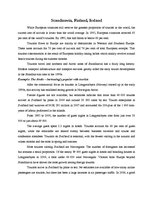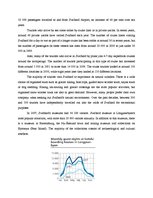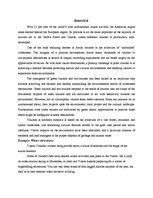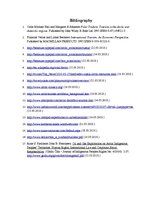-
Tourism in Arctic Regions
While European countries still receive the greatest proportion of tourists in the world, the current rate of arrivals is lower than the world average. In 1985, European countries received 65 per cent of the world’s tourists. By 1993, this had fallen to below 60 per cent.
Tourism flows to Europe are mainly to destinations in Westarn and Southern Europe. These areas account for 70 per cent of arrivals and 76 per cent of total European receipts. This tourism concentration is the result of European holiday taking habits which mainly revolve around beach tourism during the summer months.
Tourism travel into northern and Arctic areas of Scandinavia has a fairly long history. Modern transport infrastructure and transport services greatly aided the early tourist development in the Scandinavian case in the 1890s.
Example: The Arctic – increasingly popular with tourists
After the commercial focus on tourism in Longyearbyen (Norway) started up in the early 1990s, this activity has exhibited strong growth in Norvegian Arctic.
Precise figures are not available, but estimates indicate that more than 40 000 tourists arrived in Svalbard by plane in 2008 and around 30 000 came by sea. Tourist enterprises in Svalbard had turnover of NOK 291 million in 2007 and accounted for 200-plus of the 1 600 man-years of labour performed in the islands.
From 1995 to 2008, the number of guest nights in Longyearbyen rose from just over 30 000 to just about 89 000.
The average guest spent 2.2 nights in hotels. Tourists account for 60 per cent of guest nights, while the remainder are shared evenly between business travelers and course and conference attendees. Tourism on Svalbard is seasonal, with the fewest visiting in the autumn and winter months and the most in spring and summer.…
Forget what you think you know about the Arctic – or maybe at least half of it. Yes, it can be cold, dark and full of snow and ice, but that is by far not the whole truth. The Arctic is one of the last great wilderness areas of the world, where people have managed to survive and live with nature for thousands of years, and where nature explodes with life under the midnight sun during the short summer. The Arctic is not for everybody to discover, but those who try it will find themselves intrigued by the cultural and natural richness of the region: the vastness of its landscapes, the abundance of its wildlife and the uniqueness of its local and indigenous peoples ... Recent years have seen a rapid expansion of tourist activity in the north and south polar regions. The poles have become highly attractive places to visit because of improvements in technology, the end of the cold war, changes in consumer preferences, increased accessibility, and the never-ending search for new marketable tourist products. Increasing numbers of tourists are seeking to visit these remote regions in order to experience relatively undisturbed natural history, impressive natural beauty, and interesting cultural and historical features. However, the polar regions are fragile environments, vulnerable to invasions of tourists, like other wilderness areas. Thus the growth of touristic activity of various kinds presents substantial management and regulatory challenges for government agencies.

